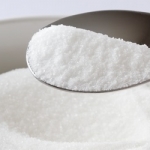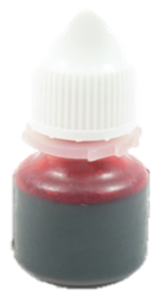Frequently Asked Questions
Bird Baths
Typical commercial bird baths are usually no deeper than 2″ in the middle, and often taper from shallow edges into the deeper middle. This depth seems to be ideal for the larger birds — grackle, cardinal, etc.
The smaller birds, however, would prefer an inch deep or so. If you observe birds around streams, you will see that they mostly use very shallow, quiet, pebble- or rocky-bottom pools or very slow-moving shallow streams for bathing.
You can make a bird bath more “natural” by placing pieces of slate in the bottom to vary depth, or larger rocks that stick up above the water, but have sloping sides giving birds different depths at which to stand. You can also tip a deeper dish so it is on a slight angle, giving you the gradation of depth.
Bird Safety
This scenario is surprisingly common and is almost always perpetrated by male Northern Cardinals, American Robins, and Mockingbirds. The concentration of hormones in male birds increases dramatically during breeding season which can cause a ferocious defense of their territory. Certain species seem more prone to being “fooled” by their reflection in windows, thinking it is a rival in their territory.
The solution is to eliminate the reflective properties of glass by covering the window from the outside. Anything attached to the inside of the window may reduce reflectivity, but not eliminate it. You may have to cover the window for a period of time, perhaps a week or more. Attaching white paper to the entire outer surface of the window will allow for light to enter while eliminating reflection. Try stringing balloons, old CDs, or strips of shiny material to the outer window surface. If the bird is still persistent, you may have to attach fine netting across your windows to at least stop them from banging into the glass.
Bird Watching
Eggs can be laid as early as late March or as late as early July, depending upon the weather and latitude. Females may begin to lay eggs one or two days after the nest is completed, but some females wait a week or more. One egg is laid each day, in the morning. The average clutch has three to five eggs but as many as seven have been reported.
Females generally begin to incubate the day the last egg is laid. The incubation period is 12 to 14 days but can be longer in the case of extreme or prolonged cold weather.
The young leave the nest after 16 to 22 days, but they remain dependent upon their parents for food and protection for three to four weeks
Birding is something you can do in your own back yard (it’s a natural habitat too). Your local park. Anywhere you travel. Or on trips you take specifically to see birds that live in a certain environment.
Birdwatchers observe wild birds in their natural habitat. Bird watching means learning to identify the birds and understand what they are doing. In North America, there are over 800 species of birds. Wherever you live, you’ll probably find at least 100 species that are easy to find in your area.
Life suddenly gets more interesting when you become aware of the varied bird life all around you.
Birding and bird watching mean the same thing. The activity of observing wild birds. (Birds in cages or any form of captivity don’t count.)
Feeding Birds
NO! Leave them up well after you see your last hummer. They know when to migrate but they need to eat a lot prior to have the energy they need to make the journey.
Birds do not feed exclusively at your feeders, Really, they do not! As much as you see the chickadee at your feeder studies show that they get less than 35% of their daily intake from your feeders.
Birds that eat seed do not become bug eaters nor do insect eating birds switch to seed. Offering the birds fresh seed, suet and meal worms help them raise healthier young.
Try an “ant moat” (sometimes called “ant baffle” or “ant guard”). This is a small plastic cup (about 3 inches in diameter) that fits tightly around the hanger wire above the hummingbird feeder. Ant moats are available from several manufacturers, and some feeders have them built-in. Fill the moat with water — ants can’t get past this barrier to the feeder.
Instead of one large feeder, hang several smaller ones in different locations. Keep the feeders far enough apart that the hummers cannot see one another; this will prevent one bird from dominating the rest.
To Dye or Not to Dye, that is the question
The use of red dye in hummingbird nectar recipes is a controversial issue. While hummingbirds are attracted to bright colors, especially red, some red dyes in the 1970’s were found to be toxic.
Today, red dyes found in food coloring and commercial hummingbird nectar are safe for both human and animal consumption, but the color is not necessary to attract the birds. Many hummingbird feeders have red bases, feeding ports or other accents that will attract the birds without risking the use of unessential dyes.
If you want to use red to attract more hummingbirds to your feeders, consider planting red flowers nearby or adding a red gazing ball near the feeder to help catch the birds’ attention.
Homemade Hummingbird Nectar Recipe
- Combine one part white sugar and four parts water.
- Heat the solution for 1-2 minutes to help the sugar dissolve and slow fermentation.
- Allow the solution to cool completely before filling feeders.
- Clean your feeders thoroughly every 3-4 days.
Nectar Recipe Tips
- If your tap water contains heavy chemicals, consider using bottled or purified water for purer nectar. You can also boil the water before adding the sugar to help purify it.
- Do not use honey, brown sugar, molasses or artificial sugar substitutes for any hummingbird nectar recipe. Honey and molasses (brown sugar contains molasses products) are too heavy for hummingbirds to digest efficiently and can ferment more quickly, creating a mold that is fatal to hummingbirds. Sugar substitutes do not have the caloric energy that hummingbirds need for energy.
- While boiling will help slow the fermentation of the nectar initially, the nectar in hummingbird feeders is contaminated as soon as it is sipped by a bird. Therefore, it is not necessary to boil the nectar once the sugar has been dissolved. If you use extra fine sugar no boiling may be needed.
- The ratio of sugar and water can be slightly adjusted, but a solution that is too sweet will be difficult for the birds to digest and one that does not contain enough sugar will not be suitable to attract hummingbirds. The 4:1 water to sugar ratio most closely approximates the sucrose levels in natural nectar.
- Hummingbird nectar must be completely cool before filling feeders. Hot nectar can warp or crack both glass and plastic hummingbird feeders and warm nectar will ferment more quickly.
- Commercial hummingbird nectar products may advertise different flavors, vitamins and other additives that are supposed to attract additional birds. These additives are not necessary for hummingbirds’ health and a simple sugar solution will attract just as many birds as more expensive commercial products.
- Unused hummingbird nectar can be stored in the refrigerator for up to one week. When making your own nectar, adjust the recipe quantity to only make enough for one week to eliminate waste.
- Clean hummingbird feeders at least once a week and refill them with fresh nectar. In warm weather or when multiple birds are using the feeder, clean them more frequently.
Following this classic hummingbird nectar recipe is a great way to create hummingbird food that is far less expensive than commercial nectars or nectar mixes. With a few simple steps, you can fill your hummingbird feeders with attractively delicious sugar water all season long.
To Dye or Not to Dye
 The use of red dye in hummingbird nectar recipes is not necessary. While hummingbirds are attracted to bright colors, especially red, some red dyes can harm the birds. Many hummingbird feeders have red bases, feeding ports or other accents that will attract the birds without risking the use of unessential dyes. If you want to use red to attract more hummingbirds to your feeders, consider planting red flowers nearby, hanging red ribbons from the feeder or adding a red gazing ball near the feeder to help catch the birds’ attention.
The use of red dye in hummingbird nectar recipes is not necessary. While hummingbirds are attracted to bright colors, especially red, some red dyes can harm the birds. Many hummingbird feeders have red bases, feeding ports or other accents that will attract the birds without risking the use of unessential dyes. If you want to use red to attract more hummingbirds to your feeders, consider planting red flowers nearby, hanging red ribbons from the feeder or adding a red gazing ball near the feeder to help catch the birds’ attention. Birds Can Be Picky Eaters
Different types of birdseed will attract different species of birds. Understanding what the different types of seed are and what birds prefer which blends can help backyard birders create a buffet tailored to their birds’ dietary preferences.
Different seeds also have different price tags, and knowing which seeds are a better bargain can help birders choose individual types of seed or seed blends with the most nutritional value per dollar. Experienced birders may create their own custom seed blends for specific bird species or different seasons, while general seed blends available commercially can also be useful for novice birders or frugal feeders.
Returns Policy
Yes, click this link to see our store return policy
Young Birds
Eggs can be laid as early as late March or as late as early July, depending upon the weather and latitude. Females may begin to lay eggs one or two days after the nest is completed, but some females wait a week or more. One egg is laid each day, in the morning. The average clutch has three to five eggs but as many as seven have been reported.
Females generally begin to incubate the day the last egg is laid. The incubation period is 12 to 14 days but can be longer in the case of extreme or prolonged cold weather.
The young leave the nest after 16 to 22 days, but they remain dependent upon their parents for food and protection for three to four weeks.
